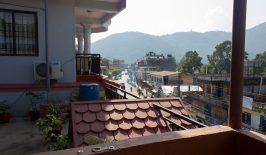This summer, the world’s second solar-powered train will go into operation – taking hundreds of tourists on a scenic trip through Argentina, and eventually on towards Bolivia and Peru, all the way to Machu Picchu.
When the Ancient Incas worshipped Inti, the god of the Sun, whose energy provided them with the food that they ate, they probably couldnn’t have imagined that five centuries later it would be the same sun that would be powering a train that passed through the foothills of their homeland. But in the not too distant future, that’s exactly what will happen – with tourists able to travel from Argentina all the way to the capital of the Inca empire, Machu Picchu, aboard the world’s second ever solar train.
This train, which has been built with the help of the same experts who developed the Byron Bay solar train, (the world’s first), is set to run on a system of rails which is already in place in the region, but which ceased operating 25 years ago: the Belgrano Cargas rail network. The rails are currently being refurbished according to the original layout and taking into account the needs of the natural environment.
Construction is already underway on the first section of the journey that will connect the town of Volcán with Purmamarca and Maimará, spanning over 20 kilometers and making its way through various terrains across northern Argentina. This first section is expected to be finished in August 2019. The second stage of construction will begin this year and corresponds to the extension of the journey to the Argentine city of Humahuaca and later to La Quiaca, located on the border with Bolivia. The project is expected to be ready by late spring 2020. Construction is then set to continue to expand the train’s routes all the way to the Bolivia and passing through the city of Uyuni and Lake Titicaca before ending in Peru, at Machu Picchu.
The project is designed primarily with tourists in mind – offering travellers thematic stops along the way where they will be able to experience and get to know more about the local culture, its traditions and the local food of the region. The train, which is called “La Quebrada” (meaning “the gorge”), will be able to carry around 240 passengers and travel at a speed of 30km/h.
The train will be a hybrid, powered both through photovoltaic panels installed on its roof and also a hydraulic diesel system, system similar to that of the Byron Bay solar train. As well as international specialists, technicians from the local Cauchari Provincial Solar Park are also involved in developing the project.
Setting up the infrastructure to be able to cover the whole route will be a huge challenge for the engineers working on it, but it shows great ambition and innovation from Latin America and a clear move towards a brand new form of “slow travel” and a more sustainable type of tourism.






